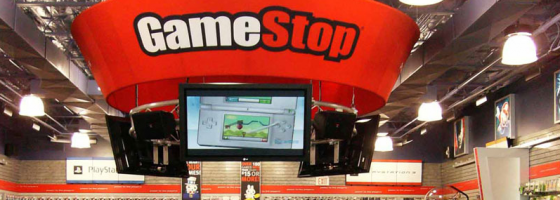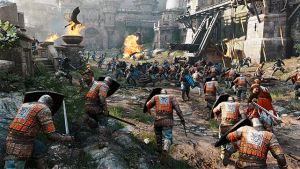Recently, we saw two more alternatives to buying video games at a traditional store with the Xbox Game Pass and Twitch selling games via Amazon. The battle between retail and the rest of the Game Industry has been ongoing, and I want to talk more about the past and what could be the future of buying video games.
The Gatekeeper:
Retail stores for the last 20+ years have always acted as the gatekeeper when it came to selling games. Originally the main purpose of the publisher/retailer relationship was to get an accurate measure of video game interest. As the game industry blew up, retailers were the only way to get the games you wanted. This gave stores like Babbages, Wal-Mart and so on complete control of what games could be purchased. Not only did this give them leverage over publishers, but impacted how easy it was to find games.
It doesn’t matter how great your game was if no one can find a copy of it, or it’s hidden in the back. As a brief summary of how the profit model worked, in most cases for every game copy sold, a cut goes to the store for carrying it, a cut goes to the publisher for funding the game, and then a cut goes to the developers. The exact arrangements are usually not discussed outside of the developers and publishers.
The key point about this arrangement was that it was the only way as a consumer to buy video games. For the pre-internet days, either your local stores had a copy of the game, or you were not playing that game period.
This also created one of the most polarizing topics when it came to the Game Industry: Used copies. Retail stores also allowed you to sell your games back to them for store credit. In return, this created a used game market that cut developers and publishers out. There is a lot to unpack with this debate; especially in today’s market. For now, we’ll just have to leave it as a foot-note for this post.
Just as the Internet changed the rest of the world, it became a major force in buying video games.
The Online Era:
Online options like Newegg and Amazon were a big deal when it came to buying video games. These online stores operated without having a brick and mortar store. This meant that there were no employees to pay, no daily expenses and maintenance and so on.
For consumers, we were no longer constrained to our general area to buy games. This also opened up the door for international offerings and buying games that were not imported to our respective countries.
The biggest thing for selling games was the fact that retailers just lost one of their main forms of clout at the bargaining table.
You didn’t need to worry about store space or coverage when people are buying your game remotely. While pre-orders were still an important part of selling games, suddenly you had the entire Internet available to find the games you wanted.
During the 00’s, retailers upped the ante with pre-order bonuses to get people into stores. As the development costs continued to grow for game development, publishers began to fight back any way they can against the retail stores and used copies. Project $10 was a way to remove content unless the consumer bought the game new or spent an additional $10.
But the biggest shot fired against retailers came with the rise of the digital era.
Digital Distribution:
Steam’s impact on the Game Industry can never be understated. Being able to sell your game in a virtual store opened up the market to just about everyone. Unlike retailers who could control content and placement, Valve allowed everything except for the most hardcore of games. The struggling PC market soon exploded with the rise of Indie games that would never have had the clout or reach to get into the retail space.
The PC industry proved that traditional retailers were not necessary to make a profit. With that said, the big thing holding back console makers was the limited Internet access outside of computers. However, things are slowly changing and retailers may be on notice.
The Streaming Era:
This console generation (and possibly the last) was when Internet access became a standard element of owning the console. Being able to play games online became a massive part of the game market.
More importantly, the use of digital storefronts became integrated into all the consoles. In today’s world, you literally don’t have to leave your house anymore to get the latest games for your respective platforms. For publishers and console owners, the utility of brick and mortar stores have gone down even more.
And that takes us to the news of the Xbox Game Pass and Twitch selling games. Both services are further aimed at making streaming and digital sales attractive to consumers. Once again, we turn to the big question: Are retail stores even necessary anymore?
A few years ago before the improvements in Internet speeds and access, that would be a no, but what about today?
The Modern and Future Market:
Physical copies of games have gone down in terms of quality over the years. The days of getting complete manuals and an extra large box are done for most companies. There are some exceptions like Atlus who still release special pre-order bonuses, and we have the collector’s editions from Blizzard.
With more examples of day one DLC and games as a service, your game disc may quickly become irrelevant. While there are a lot of pros of a digital market, we have to talk about the downsides.
A focus on increased patches and games as a service is going to force the remaining people who don’t have internet for their consoles to get it. This will also have an impact on more games as a service plans for future titles.
I do feel that we are heading for a time when Gamestop will no longer be needed. The two things that have to happen are improved bandwidth speeds for downloads and a major game not having a retail release. When that will happen, I don’t know. Stay tuned for an upcoming post where we’ll talk about the great used game debate.
What do you think about retail stores? Are they on their way out, or is there anything that will keep them relevant in the consumer’s eyes?




